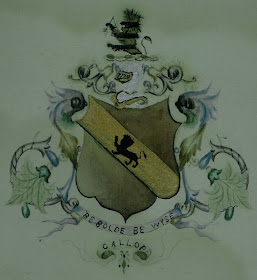I love the
Reader's Digest (note: the apostrophe is before the first "s," not after it, so it focuses on the single reader, not readers en masse . . . just a little detail that did not escape me). I think I have subscribed to it since I was in high school. For a while in life, when there was very little extra $$ for the small pleasures, a friend and I developed a system: one of us would maintain a subscription, then give the magazine to the other person the next month; we rotated this arrangement each year for quite some time before I was able to have my own subscription. I preferred to get my own copies as I would take out articles of special interest to keep in an ever growing file. I now remove only very carefully selected items since past issues are all available on line these days.
This latest edition (June/July 2010) of
Reader's Digest includes "100 Things We Love about America." One of the "things" was "Best Crowd-Pleaser": musician Josh Wilson's experience in the Liberty International Airport in Newark, New Jersey. As has happened far too often in recent years, a delay, the result of a security issue, caused crowds of travelers much inconvenience and, as a likely offshoot, much frustration and short tempers. Josh, took his instrument and played and sang the Beatles "Hey, Jude," among other songs. This song, obviously well-known (or at least somewhat known) by most of the travelers, got the crowd smiling and, soon thereafter, clapping and singing along. Soon his fellow sojourners were all "na-na-na"-ing together! What an amazing experience that must have been. Josh stated that he wanted to take the situation and "make it better" . . . and he did (p. 120). Read more about the amazing young artist, whose latest recording, "Life is not a Snapshot," was released last year, at his
Sparrow Records website (where other accounts of his experience at Newark are detailed). Or check out the experience on
YouTube (nothing can happen in this post-1984 world without someone capturing it on video!).
I see this shared experience of those passengers and Josh as a perfect example of what music can and will do for a group: bring people together and help them deal with everything from adversity to amusement, religion to relaxation. It was no different with our ancestors who joined together after a day of work to share a little music in front of the fire before turning it. When times were hard, a song could help them deal with the stress (consider the passengers on the
Titanic, joining in "Nearer My God to Thee," or all of us at various venues on and shortly after 9/11, joining in "God Bless America"). When someone passes away, we gather at a memorial or a funeral and sing together - "Amazing Grace," "Blessed be the Tie that Binds," etc. Conversely, during the holidays, even the non-religious can be found singing "Fa-la-la"s with the mall carolers. And, for those of you who visit Disneyland whenever the opportunity arises, can you honestly tell me you have
not joined in with the (animated, not even human) pirates singing "
yo-ho, yo-ho, a pirate's life for me"? And don't we feel better and more connected to those around us when we've shared a song? Obviously, Josh Wilson was well aware of the emotional power of "singing along."
This weekend - Sunday, May 16 - Southern Californians will have this opportunity at the 50th annual
Topanga Banjo and Fiddle contest, taking place at
Paramount Ranch Agoura Hills. But this is much more than just a contest: there are
concerts, workshops, activities, and lots of vendor booths, plus many jamming and singalong opportunities all over the vast park. My husband,
Uncle Butch, will be teaching a saw workshop with our friend,
Gary Friedman, who will teach people how to play
xaphoon at 1-2pm. There is truly something for everyone as this all takes place on the old
Dr. Quinn, Medicine Woman filming location: lots of hiking opportunities are provided in the surrounding acreage, and, of course, a lot of great food to refresh oneself after the hike. Our friends,
Songmakers, will have a spot in the "town" where they will be entertaining the crowds and providing lots of
singalong opps, so check them out (and join in the singing), if you decide to come to this great event.
So do like your ancestors did - celebrate life by singing along (if not at "Topanga" this weekend, then maybe with friends or family). The emotional experience is worth the effort!

 great-grandfather, Private J. Adam Hollander, Union Army, Co. I, Wisconsin 24th Inf. (1865)
great-grandfather, Private J. Adam Hollander, Union Army, Co. I, Wisconsin 24th Inf. (1865) grandfather, Seaman Lee Alfred Wilcox, USN (1903)
grandfather, Seaman Lee Alfred Wilcox, USN (1903) My first cousin, once removed, Wilbur Dallman, with his friend John (WWI)
My first cousin, once removed, Wilbur Dallman, with his friend John (WWI) 2nd cousin once removed, Robert C. Trapschuh, USN (WWII)
2nd cousin once removed, Robert C. Trapschuh, USN (WWII)























